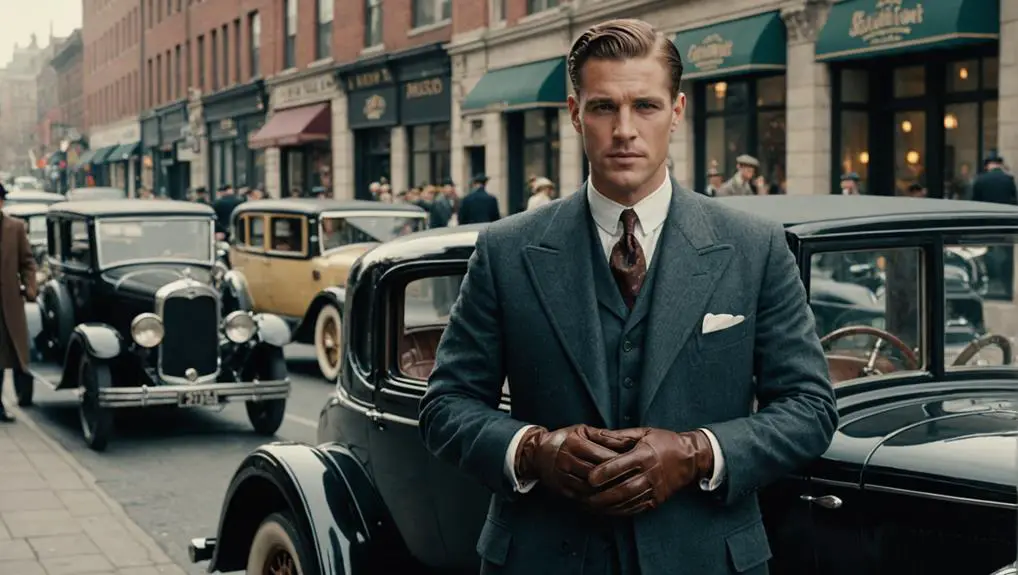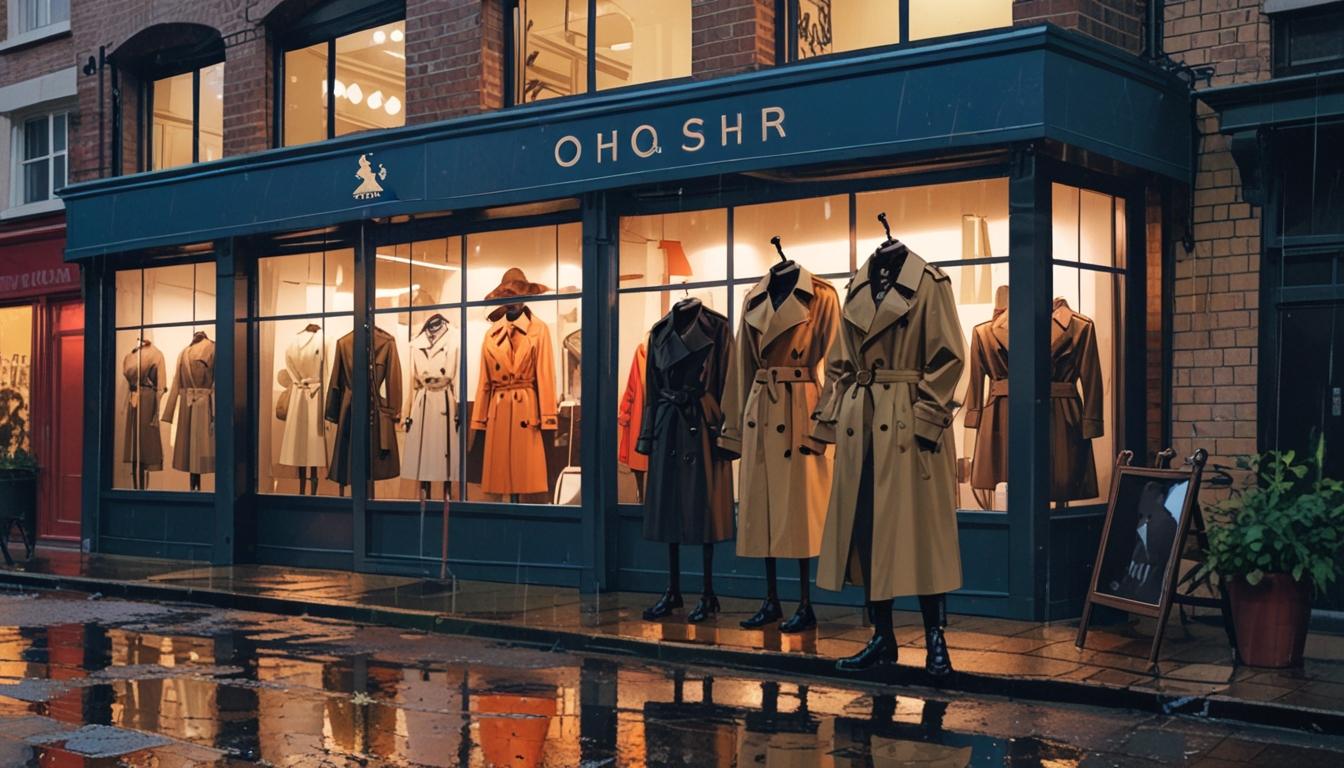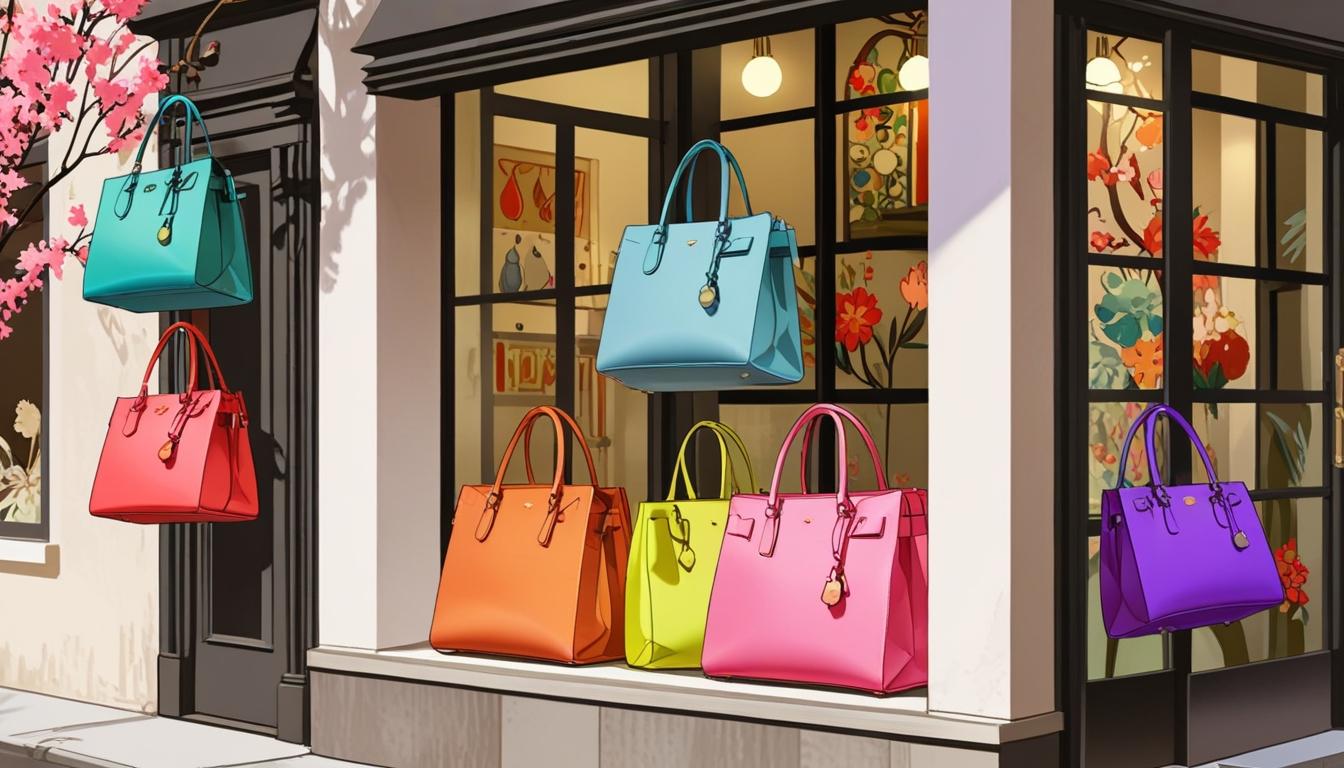In the 1920s, men's gloves shifted from formal accessories to stylish expressions of individuality. You'd find a range of materials, like pigskin and cotton, catering to both fashion and function. Day gloves were practical with loose fits, while evening gloves showcased sophistication with longer styles. Driving gloves emerged as essential items, combining utility with flair for the modern man. The colors and designs reflected personal taste and social status, adapting to a more relaxed atmosphere post-World War I. This transformation speaks to broader changes in society, and there's more to uncover about these unique fashion accessories.
Overview of 1920s Men's Gloves
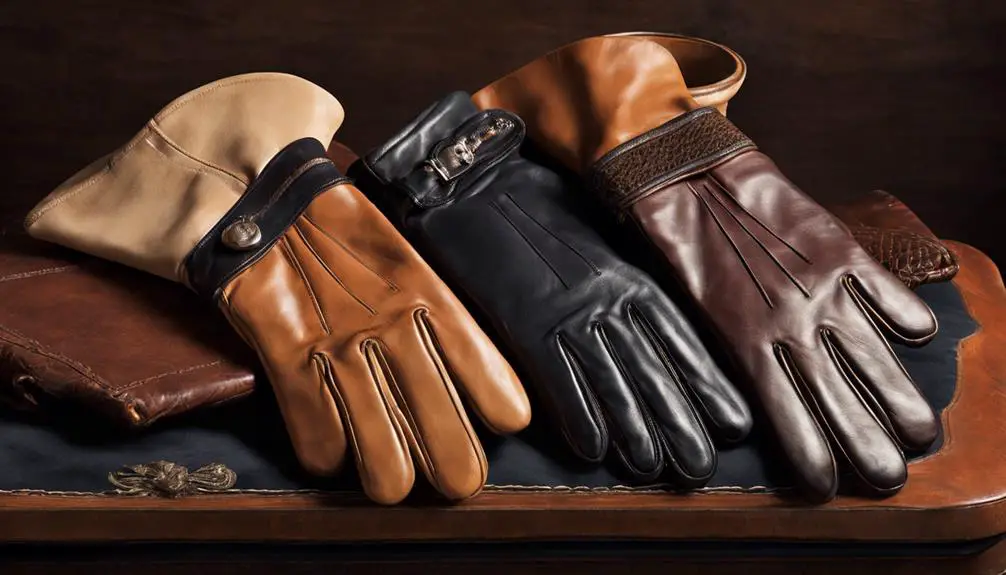
In the context of evolving fashion, the 1920s marked a significant change in men's gloves, moving away from the formal styles that had dominated previous decades. You'd notice a shift towards more casual designs that reflected the era's relaxed social atmosphere. Men's gloves in this decade began to embrace materials like pigskin and buckskin, prized for their durability and stylish appeal, making them suitable for various occasions.
The popularity of mid-forearm gloves declined as sun-tanned skin became fashionable, leading to a preference for shorter styles. While evening wear still showcased long opera gloves, the overall trend leaned towards practicality, signaling a desire for comfort in daily attire. This alteration also saw the introduction of gauntlet-style gloves, which combined functionality with style—especially appealing to drivers who needed both protection and ease of movement.
As you explore this era, you'll see how men's gloves evolved to reflect not just aesthetic preferences but also lifestyle changes. The 1920s truly encapsulated a turning point, as gloves transformed from mere formal accessories into practical fashion statements that catered to the modern man.
Popular Materials and Styles
During the 1920s, men found themselves embracing a variety of materials and styles for gloves that reflected the era's evolving tastes. The decade showcased popular choices like pigskin and buckskin, which were celebrated for their durability and comfort. For more casual occasions, cotton and rayon became favorable options, offering a lighter feel. Driving gloves emerged as a must-have accessory, often characterized by open backs and perforated designs that guaranteed better grip and ventilation while traversing the roads.
Evening gloves also maintained their significance, typically crafted from lighter materials and designed to reach past the wrist, adding an air of refinement to formal attire. As color choices expanded, darker shades became the norm for daytime wear, while lighter and more vibrant hues were favored for evening events, reflecting a newfound sense of freedom in fashion.
The trend towards looser fits marked a departure from the tightly-fitted styles of previous decades, embodying a more relaxed attitude towards clothing. This shift not only enhanced comfort but also allowed for greater expression in style, making men's gloves in the 1920s a true reflection of the era's dynamic spirit.
Day Gloves and Their Usage
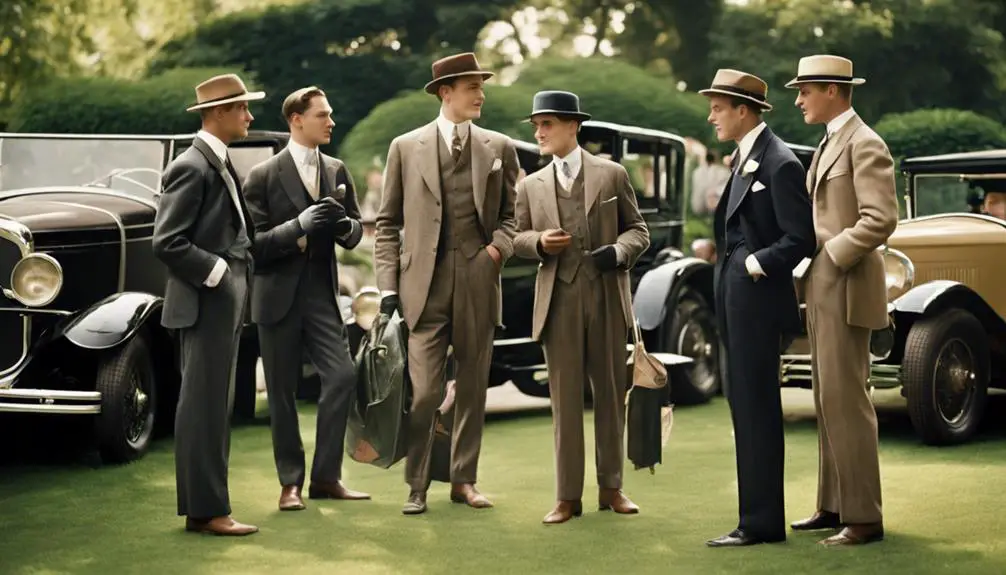
Day gloves in the 1920s served as an essential accessory for men maneuvering daily life and social gatherings. Their popularity was rooted in practicality, reflecting a growing concern for hygiene during a time when germs were feared in public spaces. The evolution of day gloves featured a change in design that prioritized both style and functionality.
Here are some key aspects of day gloves during this period:
- Materials: Made from affordable leathers like deer, sheep, and goat, day gloves became more accessible to the general public.
- Colors: Common shades included tans, creams, and greys, aligning with the era's fashion sensibilities.
- Design Innovations: The change from wrist slits to side vents and metal snaps showcased a blend of practicality and aesthetic appeal.
- Declining Popularity: By the late 1920s, the demand for day gloves began to dwindle as men's dressing habits shifted toward a more casual approach.
Evening Gloves and Formality
Evening gloves became a hallmark of sophistication and formality in the 1920s, elevating men's attire for social gatherings and events. These gloves were essential components of formal attire, reinforcing the era's emphasis on etiquette. White gloves, in particular, symbolized cleanliness and refinement, becoming a staple for distinguished occasions. You'd typically see gentlemen donning these gloves, only to remove them during meals to maintain decorum.
The longer lengths of evening gloves added an element of modesty, enhancing the overall elegance of fashionable evening wear. This design choice not only complemented tailored suits but also spoke to the societal norms of the time, where a well-dressed man was expected to adhere to a certain level of sophistication. While glove usage in casual settings declined during the Roaring Twenties, formal occasions still mandated their presence, underscoring the importance of maintaining a polished appearance.
As the decade progressed, the practicality of gloves would begin to evolve, but the 1920s firmly established evening gloves as an essential accessory. In this context, they represented more than just fashion; they were a reflection of the values and expectations of society during this transformative era.
Driving Gloves and Functionality
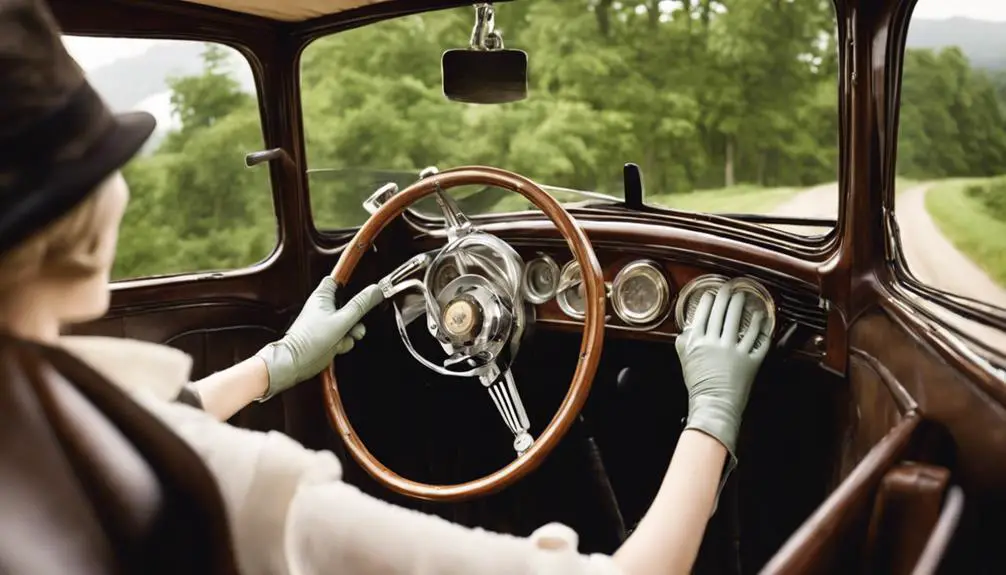
As social gatherings and formal attire flourished in the 1920s, another accessory gained traction alongside the evening glove: the driving glove. With the rise of the automobile, you found driving gloves to be essential, blending functionality with fashion. Crafted from leather, these gloves offered warmth and an improved grip on steering wheels, ensuring both comfort and control during your journeys.
Key features of driving gloves included:
- Perforations – These provided breathability, keeping your hands cool.
- Gauntlet Styles – Offering protection from the elements, they extended over the wrist.
- Snap Closures – These allowed for easy wear and secure fitting.
- Contrasting Colors – Reflecting the era's evolving fashion, they enhanced aesthetics.
Driving gloves became more than just a practical accessory; they symbolized the intersection of style and utility. While you drove on unpaved roads, they helped maintain cleanliness, ensuring that your grip remained firm and your hands stayed dry. Ultimately, these gloves captured the spirit of the decade, merging the excitement of the open road with the elegance of contemporary fashion.
Knitted Gloves for Everyday Wear
While the 1920s ushered in an era of luxury and elegance for formal wear, knitted gloves emerged as a practical alternative for everyday use, particularly appealing to the working class. These gloves provided an affordable option that combined warmth with versatility, making them a staple for many. Crafted from wool or cotton, they offered comfort during colder months and catered to a variety of activities.
One of the most appealing features of knitted gloves was their fingerless design, which allowed for greater dexterity. This practicality made them ideal for outdoor workers engaged in tasks like sewing or fishing, where fine motor skills were essential. As the decade progressed, knitted gloves gained popularity not just for their functionality but also as a stylish accessory in men's fashion.
The onset of World War II saw a surge in the production of knitted gloves, reflecting their widespread use and functional appeal. Beyond the 1920s, these gloves continued to blend practicality with style, ensuring their place in men's wardrobes for years to come. Fundamentally, knitted gloves encapsulated the spirit of the era, offering a perfect balance of utility and fashion.
Cultural Significance of Gloves
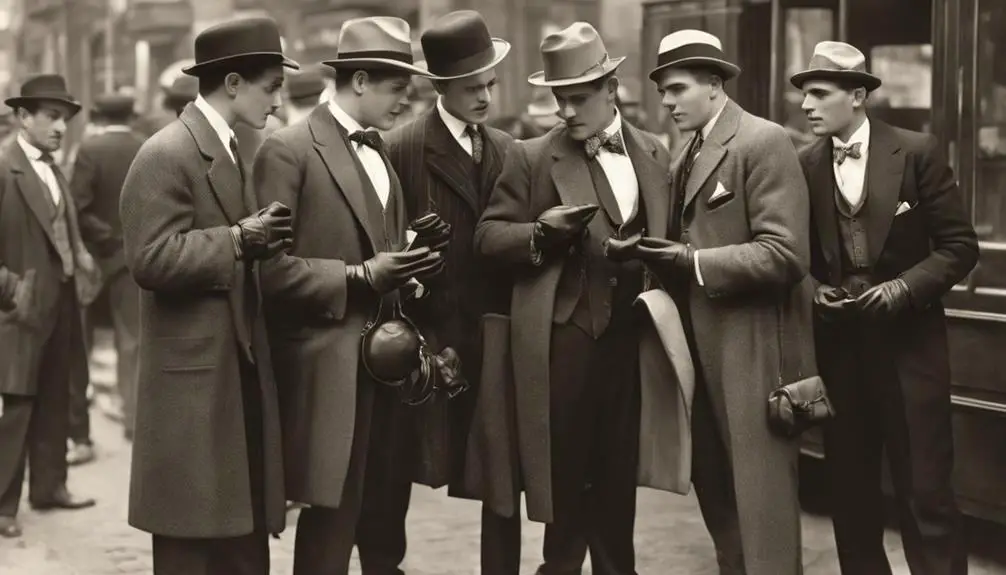
The allure of gloves in the 1920s transcended mere functionality; they became a powerful symbol of sophistication and social status in a rapidly changing society. As the world evolved post-World War I, so did cultural norms surrounding fashion and personal presentation. Gloves were no longer just practical items; they were essential fashion accessories that reflected one's place in society.
- Driving Gloves: These showcased leisure and a modern lifestyle, often made from durable materials like pigskin.
- Evening Gloves: Worn for formal occasions, they signified elegance and adherence to social etiquette.
- Color Coordination: Men carefully selected glove colors to match their outfits, enhancing their overall appearance.
- Hygiene Concerns: Gloves acted as a barrier against germs and dirt, aligning with the era's emphasis on cleanliness.
As the decade progressed, the strict rules of glove etiquette relaxed, leading to more casual designs. This shift mirrored the broader movement towards practicality in everyday wear while still maintaining an air of sophistication. Consequently, gloves in the 1920s embodied the intersection of style, status, and evolving cultural attitudes.
Evolution of Glove Fashion
How did the evolution of glove fashion in the 1920s reflect broader societal changes? The decade marked a shift towards more casual styles, influenced by the aftermath of World War I. Long leather gloves, once a staple, declined in popularity as the fashion landscape embraced relaxed aesthetics. The upper classes began favoring dyed gloves that matched their outfits, showcasing a playful approach to glove colors, while the lower classes typically stuck to neutral tones.
Practicality surged with the introduction of gauntlet gloves and elasticized options, catering to everyday needs. However, long opera gloves remained essential for evening wear, adapting to the informal social gatherings that characterized the era. As sun-tanned skin emerged as a fashion statement, the necessity for gloves during daytime activities diminished, reflecting a broader acceptance of casual styles. Still, gloves became a symbol of refinement for special occasions, evolving to mirror changing societal norms. Vintage inspired clothing often incorporated these elements, blending traditional elegance with contemporary trends. This evolution illustrates how gloves progressed from essential accessories to versatile fashion statements, mirroring the dynamic shifts in societal attitudes during the 1920s.
Care Tips for Vintage Gloves
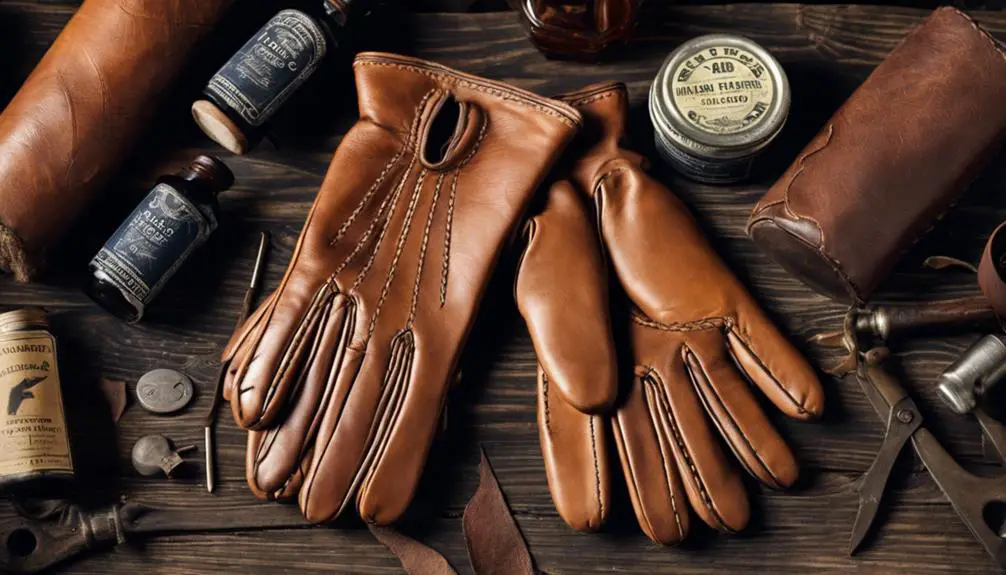
Vintage gloves, cherished for their elegance and history, require specific care to maintain their beauty and functionality. Understanding the importance of label identification can also enhance your appreciation for these exquisite items. Proper maintenance not only preserves their aesthetic but also prolongs their lifespan. Here are some essential care tips:
- Inspect vintage gloves regularly for signs of wear. Look for fraying seams or discoloration that may require attention.
- Store vintage gloves flat in a cool, dry place away from direct sunlight. This prevents fading and deterioration of materials, keeping them pristine.
- After each wear, gently stretch the fingers and body of vintage gloves to help restore shape and prevent stiffness. This simple act can notably extend their usability.
- For maintenance, lightly sponge dirt off gloves with a moist cloth and apply leather conditioner periodically. This keeps the leather supple and prevents cracking over time.
Frequently Asked Questions
Did Men Wear Gloves in the 1920s?
Yes, men did wear gloves in the 1920s. They often used gloves as stylish accessories for formal events and daily activities, reflecting social status while adapting to the era's evolving fashion trends and casual attitudes.
What Was the Glove Etiquette in the 1930s?
In the 1930s, you'd wear white gloves for formal events, removing them during meals. Longer gloves suited evening attire, while color coordination was key, with clean, well-kept gloves reflecting your attention to etiquette and personal care.
Why Did Men Used to Wear Gloves?
You wore gloves to signify status and sophistication, protecting your hands from dirt and germs. They enhanced your formal attire, reflecting societal expectations, while also providing warmth and grip in an increasingly automobile-centric world.
Did Flappers Wear Gloves in the 1920s?
Yes, flappers wore gloves as fashionable accessories, often matching them with elegant outfits. These gloves, ranging from wrist to elbow length, highlighted their modern silhouettes, showcasing their boldness and desire for independence during the 1920s.
